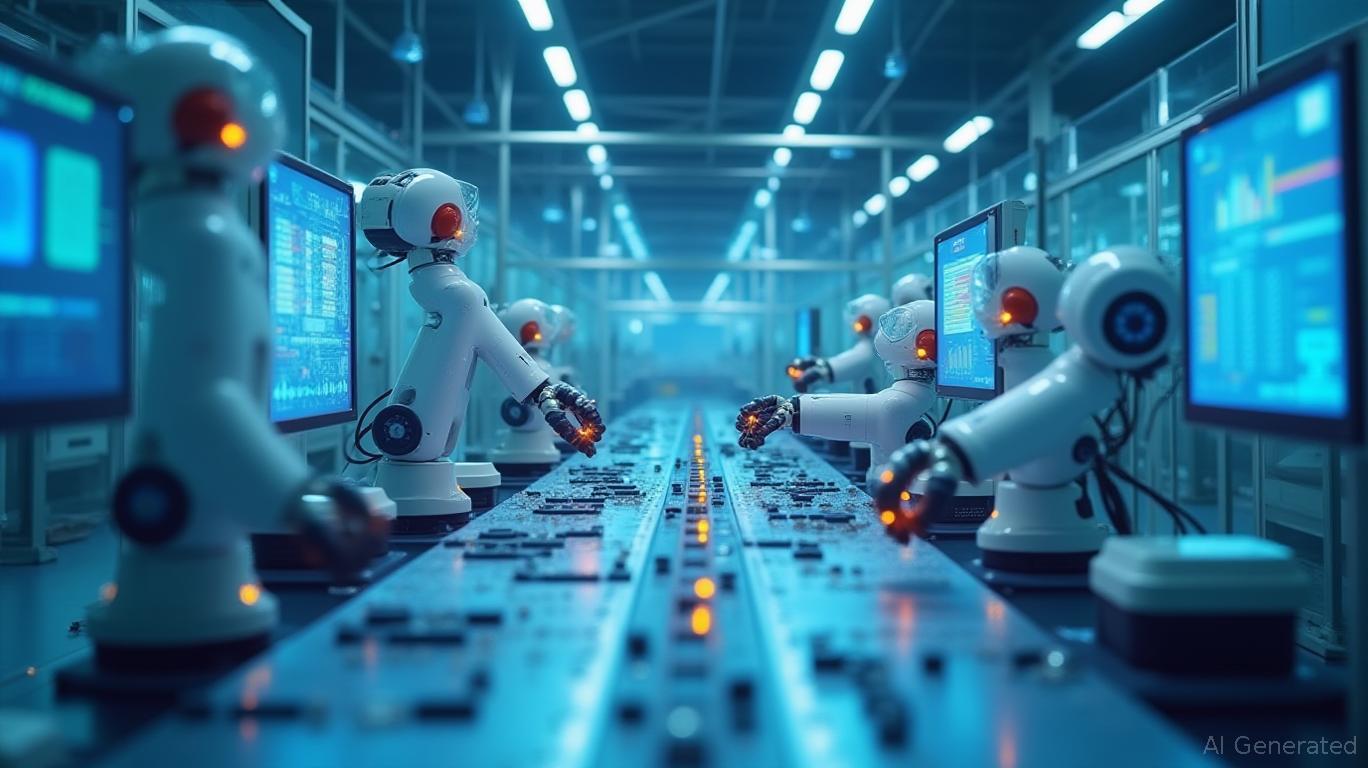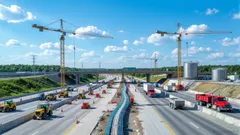AInvest Newsletter
Daily stocks & crypto headlines, free to your inbox
The manufacturing sector is undergoing a profound transformation, driven by the relentless adoption of industrial automation. Robotics and AI-enabled machinery are no longer niche tools but foundational pillars of a global shift toward smarter, faster, and more sustainable production. This structural shift, fueled by technological advancements and strategic investments, presents investors with long-term opportunities in a market poised for exponential growth.
Market Momentum: A Decade of Explosive Expansion
The

Why Now? Drivers of Structural Change
1. Labor Shortages and Efficiency Gains: Automation addresses acute labor shortages while reducing errors and operational costs. For instance, ABB's EV charging infrastructure projects and Omron's high-precision SCARA robots exemplify how automation improves productivity in automotive and electronics manufacturing.
2. Technological Synergy: AI, IoT, and 5G are enabling predictive maintenance, real-time data analytics, and autonomous decision-making. Emerson's TopWorx DX valve-testing system and Siemens' acquisition of predictive maintenance firm Senseye highlight the integration of AI into core operational workflows.
3. Government Backing: Initiatives like China's “Made in China 2025” and Singapore's Automation Support Package are subsidizing adoption, while the EU's Green Deal incentivizes sustainable manufacturing through automation.
Regional Dynamics: Where the Growth is Concentrated
- Asia Pacific: Dominates with 37.7% market share (2022), driven by China and India's rapid industrialization.
- Europe: Expected to grow fastest in advanced robotics, fueled by automotive innovation and R&D investment.
- North America: Leads in AI-enabled machinery, with the U.S. market projected to hit $81.92 billion by 2034—a 20.36% CAGR from its 2024 base of $12.84 billion.
Key Investment Themes
1. Hardware Innovation: PLCs, sensors, and edge-computing devices form the backbone of automation. Companies like Rockwell Automation (ROK) and Schneider Electric (SU.PA) are leaders in scalable hardware solutions.
2. AI Integration: Firms like NVIDIA (NVDA) and Microsoft (MSFT) are advancing AI algorithms that power robotics and predictive analytics.
3. Logistics Automation: The warehousing segment is booming, with Maple Advanced Robotics' award-winning systems and Pudu Robotics' autonomous delivery bots showcasing the sector's potential.
Navigating Challenges
While the long-term outlook is bullish, investors must account for risks:
- High Initial Costs: Smaller firms may delay adoption without subsidies.
- Labor Resistance: Job displacement concerns require social and policy solutions.
The Playbook for Investors
- Target Leaders: Allocate capital to dominant players like ABB, Siemens (SIEGY), and FANUC (6954.T) for steady growth.
- Look for Niche Innovators: Companies like RIC Technology (launching 3D-printed construction robots) or startups winning industry accolades (e.g., Maple Advanced Robotics) offer high-growth potential.
- Consider ETFs: Funds like the Robotics & Automation ETF (ROBO) or the Industrial Automation ETF (IAUT) provide diversified exposure.
Conclusion: A Manufacturing Revolution
Industrial automation is not a passing trend but a structural shift reshaping global industry. With CAGRs exceeding 20% in robotics and AI sectors, and government policies accelerating adoption, this is a multi-decade opportunity. While short-term volatility may occur, investors who commit to the long game stand to benefit from a market where efficiency and innovation are the only constants.
The factories of tomorrow will be defined by cobots, AI-driven analytics, and IoT-connected systems. For investors, the time to position for this future is now.
Tracking the pulse of global finance, one headline at a time.

Dec.15 2025

Dec.14 2025

Dec.14 2025

Dec.14 2025

Dec.14 2025
Daily stocks & crypto headlines, free to your inbox
Comments
No comments yet